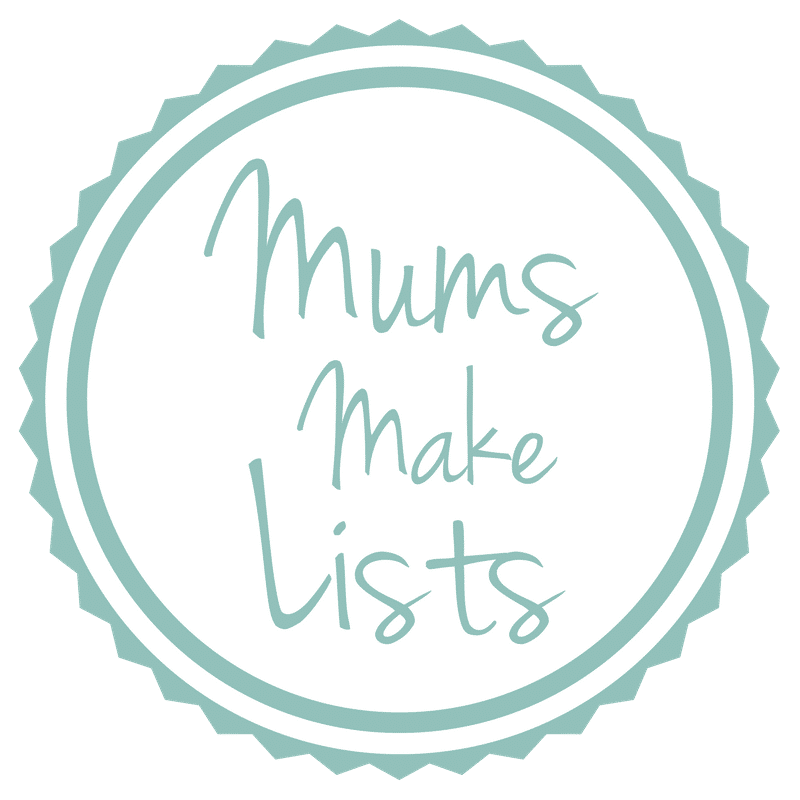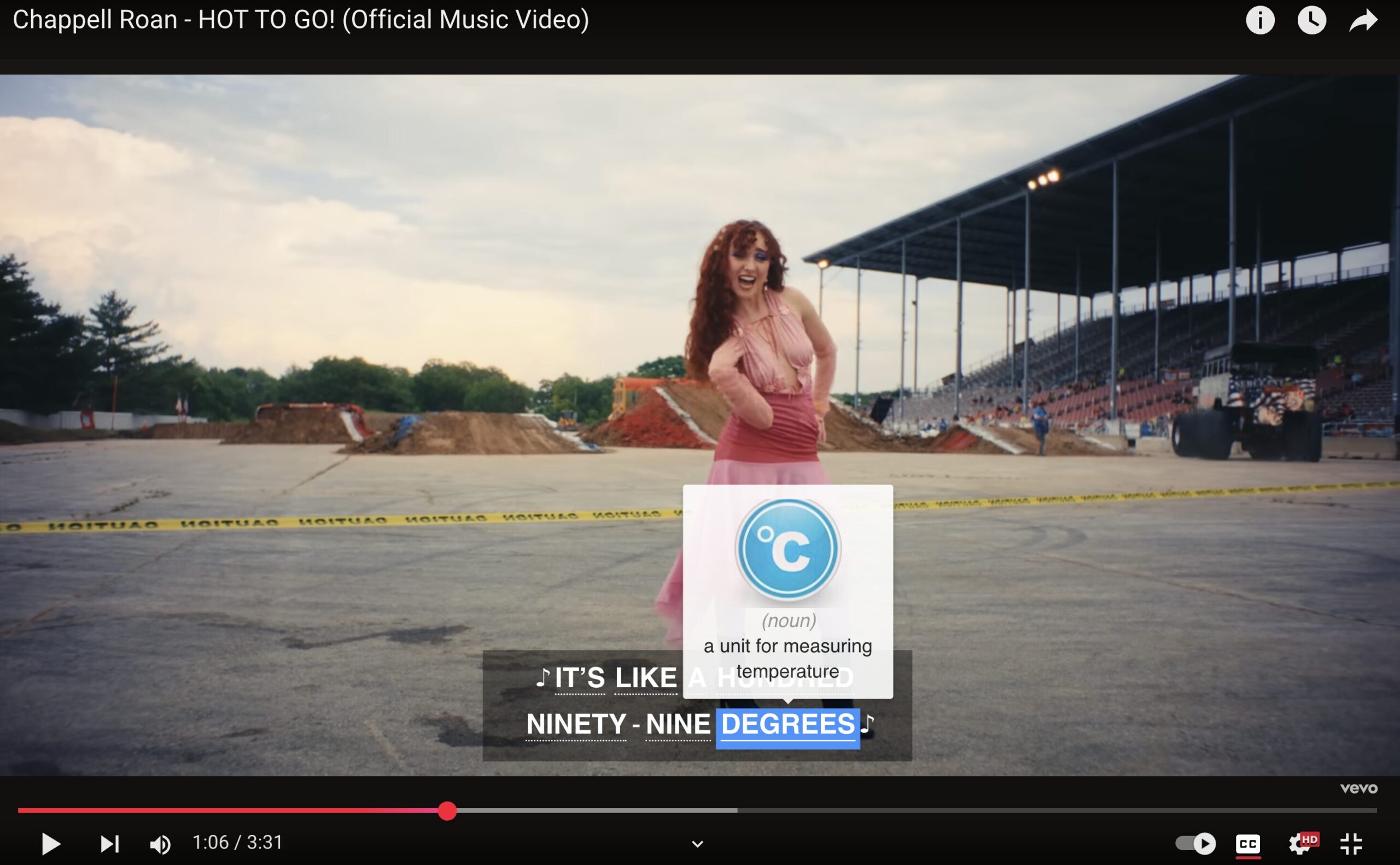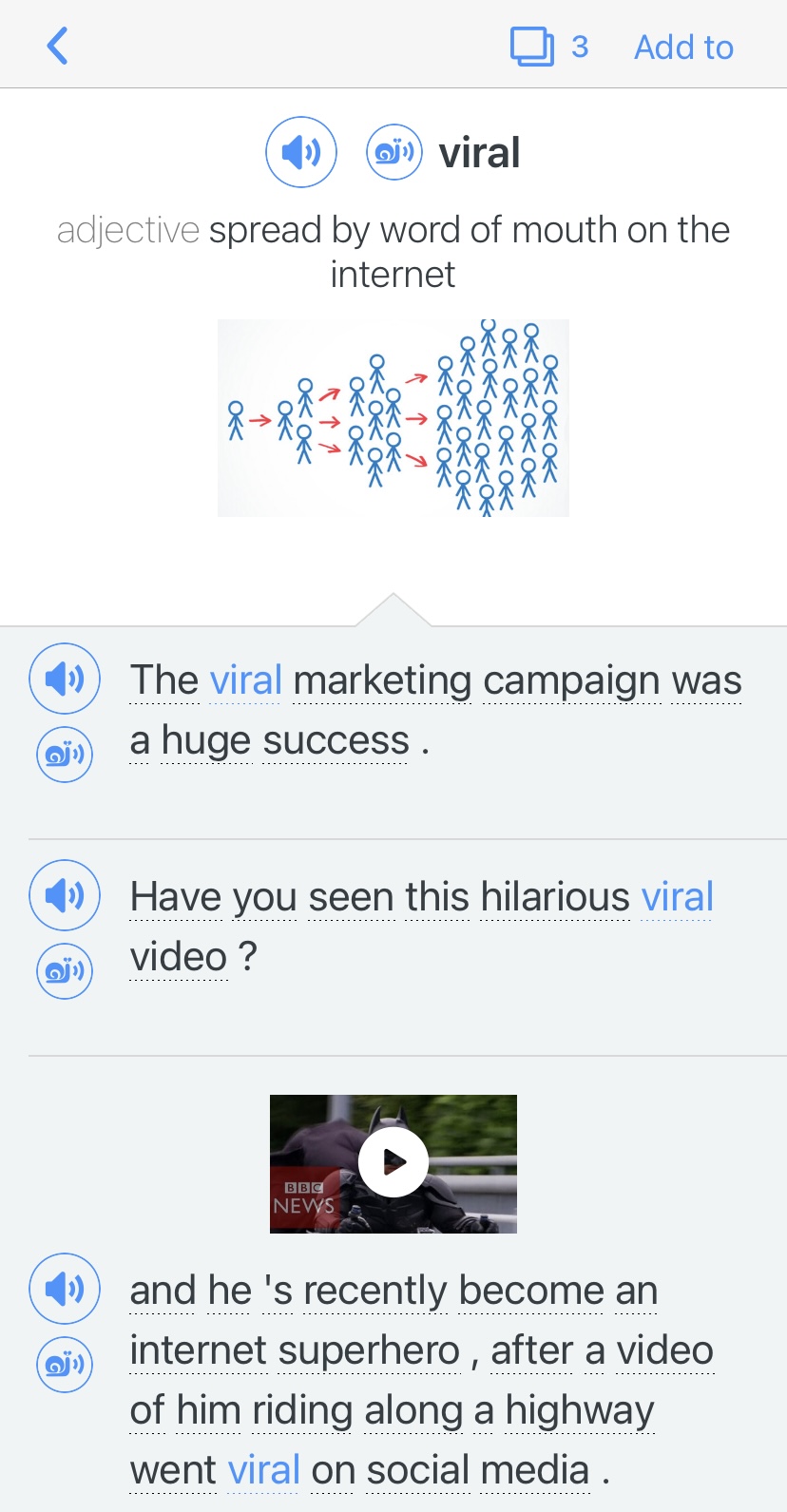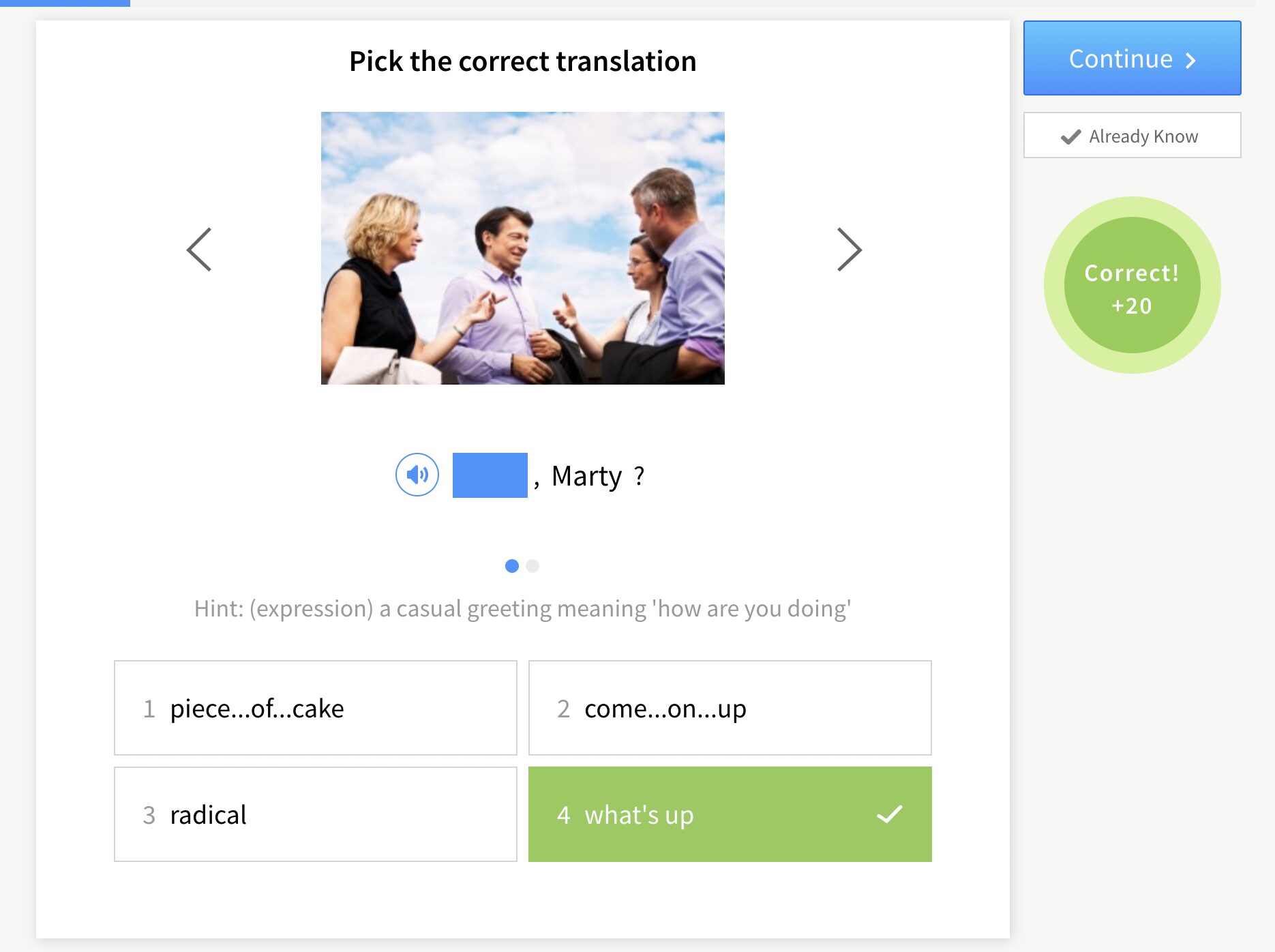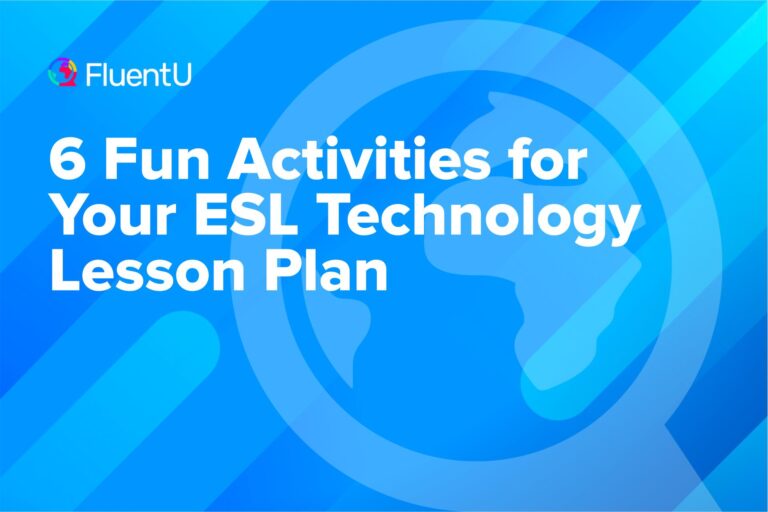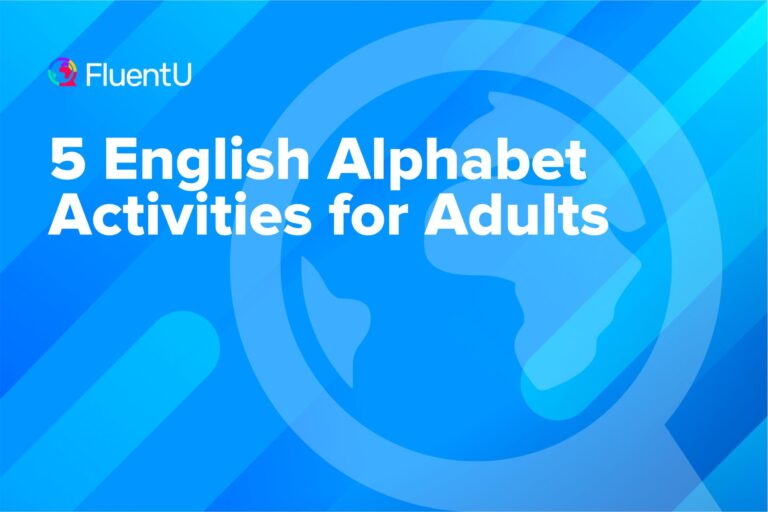Contents
- 1. Recite the Poem, “A Visit from St. Nicholas”
- 2. Play the TED Talk “How We Used Christmas Lights to Fight a War” by Jose Miguel Sokoloff
- 3. Teach Students How to Deck the Halls
- 4. Sing a Christmas Carol
- 5. Discuss Christmas and the Spirit of Giving Gifts
- 6. Read Christmas Poetry
- 7. Discuss Christmas Foods
- 8. Throw a Christmas Party
- 9. Use Christmas as a Means for Cultural Exchange
- 10. Make Christmas Cards Together
- 11. Talk About Christmas Shopping Experiences
- And One More Thing…
11 Festive ESL Christmas Lessons for Adults
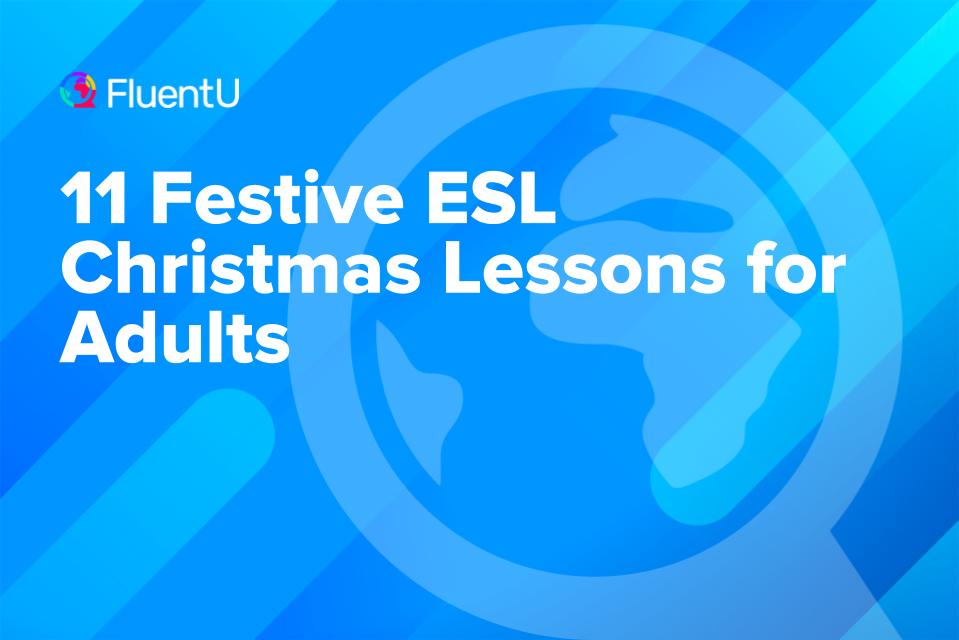
Christmas is when we all come together as friends and families, enjoy each other’s company, watch holiday movies and take time out of our busy lives to relax.
For ESL teachers, Christmas is the perfect time to gift your adult students with fun and exciting lessons they wouldn’t experience any other time of the year, learning more about the culture of English-speaking countries while improving their language skills.
Check out some of my favorite Christmas lessons, along with activity ideas.
Download: This blog post is available as a convenient and portable PDF that you can take anywhere. Click here to get a copy. (Download)
1. Recite the Poem, “A Visit from St. Nicholas”
More popularly known by its introduction, “‘Twas the Night Before Christmas,” this iconic English poem tells a delightful story about Christmas Eve and the excitement leading up to Christmas.
Your students can learn about St. Nicholas, the famous reindeer and the concept of filling stockings with gifts and toys!
Before class, print the poem and prepare a list of discussion questions to cover at the end of the reading. Start the lesson by introducing some of the key Christmas vocabulary words and their definitions to your students, including chimney, lawn, clatter, shutters and sleigh.
Then, let your students read the poem together. After reading, you can ask them to answer the discussion questions. They can engage in small groups, or you can have the discussion as a class.
The questions can be tailored to suit the level of your class, but in general, you want to use questions that check your students’ understanding of the poem.
Some of my favorite discussion questions are:
- Can you guess what “arose such a clatter” means?
- What is another name for St. Nicholas?
- What would you do if you heard a noise on your roof?
Activity: What’s Your Favorite Holiday Tradition?
The poem examines one of the main traditions in Western celebrations of Christmas: presents from Santa.
A great follow-up activity is to have students write a short paragraph about their favorite holiday tradition, whether on Christmas or an equally important holiday in their culture. Save time at the end of the lesson for everyone to share what they wrote.
2. Play the TED Talk “How We Used Christmas Lights to Fight a War” by Jose Miguel Sokoloff
Watching Christmas videos is a great way to engage your students in learning this time of year. This 15-minute TED Talk clip is great for more advanced learners and students tired of traditional Christmastime English lessons.
In short, this video looks at how an advertising executive and his team used Christmas lights to help demobilize members of the guerrilla movement in Colombia, his home country. In keeping with the Christmas spirit, the story also shows how conflict can be resolved without the use of violence.
Before class, prepare a list of key vocabulary words and their definitions. This video has a number of challenging terms, so it is important that you pre-teach the vocabulary, including guerrilla movement, strategic, demobilize, conflict and squadron.
The best part of teaching with TED Talks is the discussions afterwards. Come up with a list of discussion topics that you want to cover with your class at the end of the video, such as:
- What was their radio strategy? Were there any problems with it?
- What was the purpose of the Christmas trees?
- Do you agree that “being generous makes you stronger?” Why or why not?
I recommend printing discussion questions on a handout and giving it to your students before playing the clip. That way, they can take notes and answer questions while watching the video. Then, you can go over the questions as a class or divide your students into groups of three or four and have them cover the assigned talking points.
If you want to give your students authentic language exposure through videos, try bringing a program like FluentU into the classroom. It helps them learn English while gaining first-hand exposure to the culture, giving them greater insight into everything from holiday celebrations to how native speakers interact.
FluentU takes authentic videos—like music videos, movie trailers, news and inspiring talks—and turns them into personalized language learning lessons.
You can try FluentU for free for 2 weeks. Check out the website or download the iOS app or Android app.
P.S. Click here to take advantage of our current sale! (Expires at the end of this month.)

Activity: Talk About International Holiday Traditions
For a follow-up activity, I recommend organizing your students into small groups and giving each group a country to research. Compare that country to the unorthodox Christmas celebration covered in the video, then have your groups take notes on how the target country celebrates Christmas—just be sure to choose countries that do celebrate it!
At the beginning of your next lesson, give each group time to report back to the whole class what they discovered about their assigned country’s Christmas rituals.
3. Teach Students How to Deck the Halls
Explain to your students how families decorate their houses during Christmas and then ask them whether they think decorating for Christmas looks like fun or like extra work.
Then, show your students this article titled “Go ahead, put up the Christmas lights now! Science says it will make you happier.”
But before you have them read it, pre-teach some of the more difficult vocabulary, including trimming the tree, habituation, spike, ambiance, nostalgia, and sociable.
Once you’ve covered the vocabulary, have your students read the article as a whole class or in small groups. Then, use the following discussion questions, or your own, to have a conversation about the article:
- Do you decorate for Christmas or any other holiday?
- When do you think is the right time to decorate for Christmas?
- Why does decorating make people happy?
Activity: Make Your Own Christmas Decorations!
Use the rest of your class time (or the next class) to let students make their own holiday decorations. You can make Christmas ornaments, wreaths or even garlands. These decorations or ornaments can be taken home by the students or you can use them to add a little festive spirit to the classroom.
If you’re looking for decoration ideas, the website “Mums Make Lists” has loads of low-cost DIY Christmas decoration ideas to choose from.
4. Sing a Christmas Carol
The classic Christmas carol, “We Wish You a Merry Christmas” is ideal for any Christmas lesson, including those with adults. It is simple, endearing and catchy.
Begin by discussing some of the key vocabulary words and phrases in the song, like good tidings, kin and pudding.
Then, play the song at least once for your students. If you don’t have a Christmas CD handy, you can use this video on YouTube.
Play the song as many times as necessary, then discuss it with your students, talking about some of the traditions surrounding Christmas carols, as well as any ideas presented in the song. If you need ideas for post-caroling discussion topics, try a few of these questions:
- What is your favorite holiday song and why?
- Is there anything similar to Christmas caroling in your culture?
Activity: Let’s Sing!
Once students are familiar with the melody, invite them to sing the song with you. You can divide the class into two groups and sing the song together. If you want to mix things up, check out some of these other fun and festive carols you can sing with your students.
5. Discuss Christmas and the Spirit of Giving Gifts
There are so many wonderful Christmas stories out there, but one of my personal favorites is “The Gift of the Magi.” It’s a beautiful short story with a moral befitting the season.
At the beginning of class, prepare a list of the vocabulary to teach the students ahead of time—waterfall, magi, valuable, jewels and furnished are all important words to understand for this story.
Once students are familiar with the vocabulary, read the story as a whole class. After you’ve covered the story, ask the following comprehension questions:
- What are Jim and Della’s two prized possessions?
- How are the watch chain and Jim alike? What qualities do they share?
- Do you think Della and Jim were wise or not?
After you’ve talked about the story as a class, let students perform the activity below.
Activity: Make a Christmas List
Have students write their own Christmas list. You can provide them with paper and ask them to write down what they hope to get for Christmas. Remind them to think about the gifts in the story, then ask them to briefly mention why they want the items they listed.
6. Read Christmas Poetry
Christmas-themed poetry is a great way to teach your students about Christmas culture in English-speaking countries and highlight important holiday-themed vocabulary.
It’s also a great option for reading and pronunciation practice. Depending on the size of your classroom and your students’ proficiency levels, you can have them read the poems aloud line-by-line as a class or have each student recite a poem.
Unlike Christmas stories, which tend to be geared more toward children, you won’t have a hard time finding Christmas poems that your adult students will love. To get started finding the right poem for your class, take a look at PoemHunter’s top 100 Christmas poems written by some of the greatest minds in English literature.
Activity: Write Your Own Christmas Poem
If you really want to make your poetry lesson go the distance, test your students’ writing skills by having them make Christmas-themed poems of their own!
You can also show your students this video to introduce them to even more famous Christmas expressions, boosting their poetry writing and comprehension skills even further:
7. Discuss Christmas Foods
We all love to eat, so why not incorporate food into your lesson by talking about some favorite holiday snacks?
Your lesson will be twice as engaging because it’ll also give students some insight into how Christmas is celebrated in various English-speaking countries.
Here are some interesting holiday food videos to get your lesson started:
- How to make the perfect mince pie: Along with figgy pudding, mince pie is one of those traditional Christmas dishes that students are bound to come across when reading literature related to Christmas. It’s also an essential part of every British Christmas.
- American kids try Christmas foods from around the world: This funny video clip shows young children trying Christmas foods from different cultures. It’s full of adorable humor, making it the perfect clip to start the class with.
- Christmas dinner in the U.S. versus Germany: A short video clip comparing the differences between Christmas foods in the U.S. and Germany.
Be sure to introduce vocabulary beforehand. Cover the names of Christmas foods as well as flavors like sweet, savory, salty and so on.
Activity: Talk About Christmas Dinner at Your Table
A nice follow-up activity would be asking your students to either talk or write about the traditional foods they eat during the winter holidays in their native countries.
8. Throw a Christmas Party
Why not give your students a chance to practice their casual English by hosting a potluck Christmas party in the classroom?
Give your students notice about the party far enough in advance to give them time to plan what to cook and drink. You can also ask your students to give a short presentation on what they brought and why they brought it.
Activity: Host a Christmas Party
Have each student bring in a Christmas-themed food or drink (this activity easily pairs with the food discussion mentioned above) and then have them give a presentation. If you’ve got particularly chatty students, give them the chance to ask questions at the end of each presentation. After everyone has spoken, you and your class can have fun eating and chatting together in English.
9. Use Christmas as a Means for Cultural Exchange
One of the main reasons I love teaching adults is because they enjoy learning about differences between their culture and yours. The holidays are often a perfect time to learn about one another’s customs while also learning English.
A good way to do this is by starting class with a discussion of how Christmas is celebrated differently in your country versus other English-speaking countries. Try introducing a speaking or writing exercise in which your students discuss how they celebrate Christmas/winter holidays at home.
Activity: What Country Has the Best Christmas Celebration
Ask students to compare and contrast the different traditions either individually in writing or together in small groups. Then, expand the compare and contrast activity to include their own winter celebrations.
10. Make Christmas Cards Together
Sending Christmas cards isn’t just a fundamental part of almost everyone’s holiday season—it’s also a great way to test your students’ writing skills.
Writing Christmas cards is an easy way to add some holiday flavor to your typical writing lesson. All you need to do is explain the significance of Christmas cards and how English speakers tend to send them to their friends and family over the holidays.
Make sure you explain that Christmas cards differ from standard written letters in that the writer is expressing gratitude and sending season’s greetings to the recipient. Once you’ve explained a little bit about the significance of Christmas cards, make sure to pre-teach your target vocabulary words for the lesson.
Activity: Write a Christmas Card
Have students write their own Christmas cards! You can have them make personal cards for their family members, or you can have a little fun and get your students to write cards for one another.
11. Talk About Christmas Shopping Experiences
Covering a shopping-themed lesson during Christmas time? Put those vocabulary words like buy, sell, cash, credit card, sale and 50 percent off to good use by having your students roleplay a Christmas shopping experience.
Explain to your students that buying and exchanging presents is a big part of the Christmas season in English-speaking countries.
Activity: Christmas Shopping Experience Roleplay
Have each student come up with a shopping list of gifts they’re going to buy for their friends and family and then have them act out the shopping scenario in pairs.
Teaching holiday lessons to adults isn’t difficult, provided that you’re still helping them improve their English in the process.
These ESL Christmas activities should boost your students’ language skills while getting everyone into the holiday spirit.
Have a Merry Christmas!
Download: This blog post is available as a convenient and portable PDF that you can take anywhere. Click here to get a copy. (Download)
And One More Thing…
If you’re like me and prefer learning English on your own time, from the comfort of your smart device, I’ve got something you’ll love.
With FluentU’s Chrome Extension, you can turn any YouTube or Netflix video with subtitles into an interactive language lesson. That means you can learn from real-world content, just as native English speakers actually speak.
You can even import your favorite YouTube videos into your FluentU account. If you’re not sure where to start, check out our curated library of videos that are handpicked for beginners and intermediate learners, as you can see here:
FluentU brings native English videos within reach. With interactive captions, you can hover over any word to see an image, definition, and pronunciation.
Just click on the word to see other example sentences and videos where the word is used in different contexts. Plus, you can add it to your flashcards! For example, if I tap on the word "viral," this is what pops up:
Want to make sure you really remember what you've learned? We’ve got you covered. Practice and reinforce the vocab from each video with learn mode. Swipe to see more examples of the word you’re learning, and play mini-games with our dynamic flashcards.
The best part? FluentU tracks everything you’re learning and uses that to create a personalized experience just for you. You’ll get extra practice with tricky words and even be reminded when it’s time to review—so nothing slips through the cracks.
Start using the FluentU website on your computer or tablet or, better yet, download our from the App Store or Google Play.
Click here to take advantage of our current sale! (Expires at the end of this month.)

